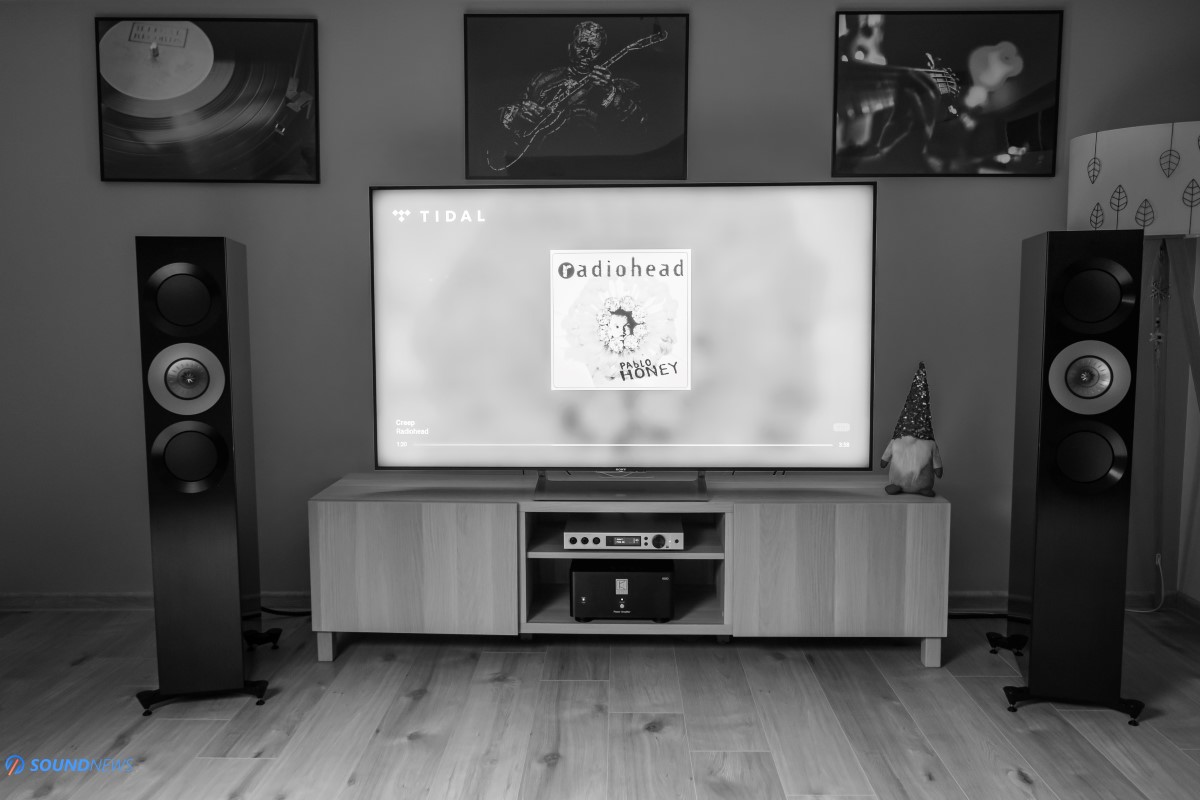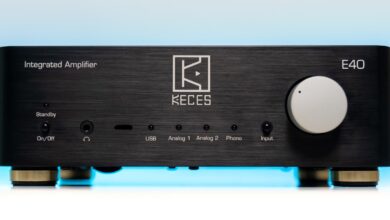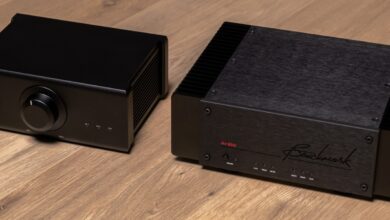KECES S300 Power Amplifier Review – Harder, Better, Faster, Stronger
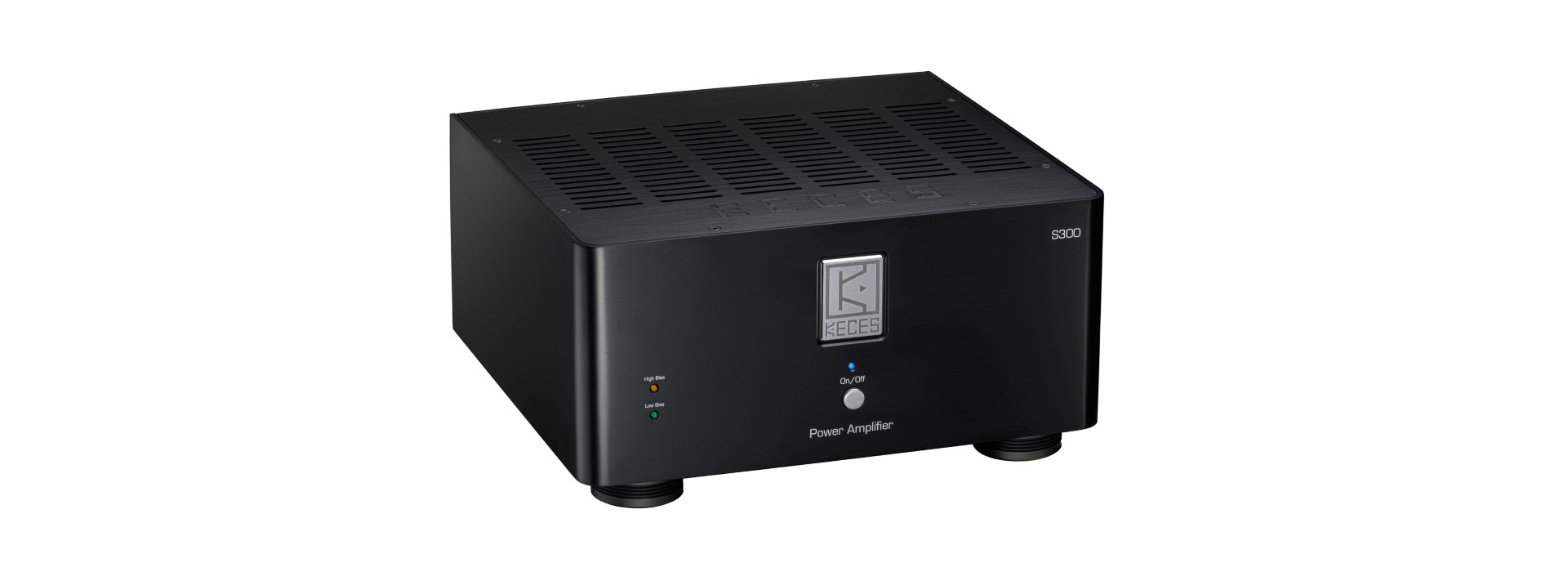
My Video Review:
I was given the privilege of reviewing the Keces S125 power amplifier some time ago, that in time become my daily driver work horse. Anything else I had before it felt muddy, raw and unpolished. It grown on me with its clean nature and although S125 isn’t a heavy lifter and wouldn’t drive the hardest loads out there, it moved away from my music to a point of becoming invisible in my chain, adding just a pinch of that class-A sweetness and flow in my tunes. It was both super technical & natural sounding and between you and me, this is exactly what I’m searching in all types of amplifiers: a soulless box that will preserve the soul of the music, without adding or subtracting anything from there. Close friends of mine, know my obsession as when I’m closing my eyes in a listening session, a hunting game will undergo, where I would prey on the smallest nuances in my music, on foot movements in the auditorium, on thin layers of air passing by or just on plain boring mastering errors. I’m holding transparency in any analog amplifier, above brute force and sheer muscles. Give me a low power, pure sounding unit anytime of the day in detriment of a hulk amplifier that would add fog and noise in my music.
Keces Audio kindly asked if I’d want to review their newest S125 version 2.0 that in the later stages of its development changed its name to S300. It no longer felt like a slight evolution of the S125, but a much higher rank power amplifier from any point of view. How could I say no to their best shot at high-end audio? With S300, Keces didn’t improve its brute force that much, it is still fighting in the same weight class. However, there is a huge increase in current delivery (50% to be more precise), a huge increase in power storing (capacitance) and a double increase in power draining from AC lines. S300 will dissipate 1000W instead of 500W at full power and that tells me a lot about its working principle. What was 3 Watts of full-class-A power, now sits at 5 Watts and what was 30 Amperes peak-current per channel, sits now at 45 fricking’ amperes. A Watt is a Watt, right? Not really.
Keces S125 power amp at only $1099/€1399 was a no-brainer unit that wiped the floor with my former costlier amplifiers from established and well-known designers. On the other hand, S300 with its much higher price point of $2799/€2999 will be exchanging punches with upper echelon amplifiers. The final question remains the same, would it sound as impressive as its predecessor did? Good question lads, everything will be revealed very soon.
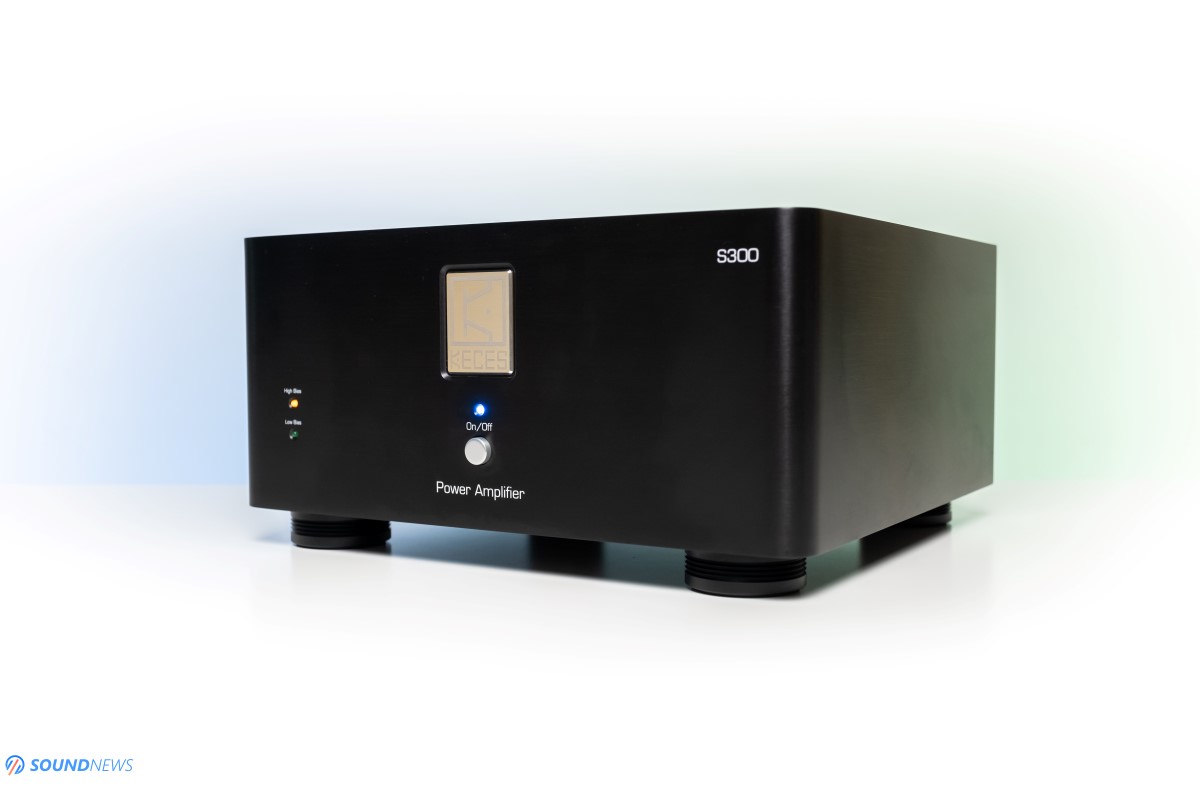
Unboxing & Package Contents
A box in a box in a box is exactly how S300 arrived at my door, a matryoshka like unboxing that should well protect the unit during shipping. While the product box wasn’t that huge, its weight suggested that a huge transformer is lurking somewhere inside that unit. S300, as its predecessor, was wrapped all around with a spongy white foam and that is always a good sign. Inside the box you’ll also find a heavy-duty power cable, a 12V trigger cable just in case you own several Keces devices and want to control them all with a single remote, a detailed user manual in English is also in there which I strongly recommend checking out, just to learn more about bi-amping and bridging.
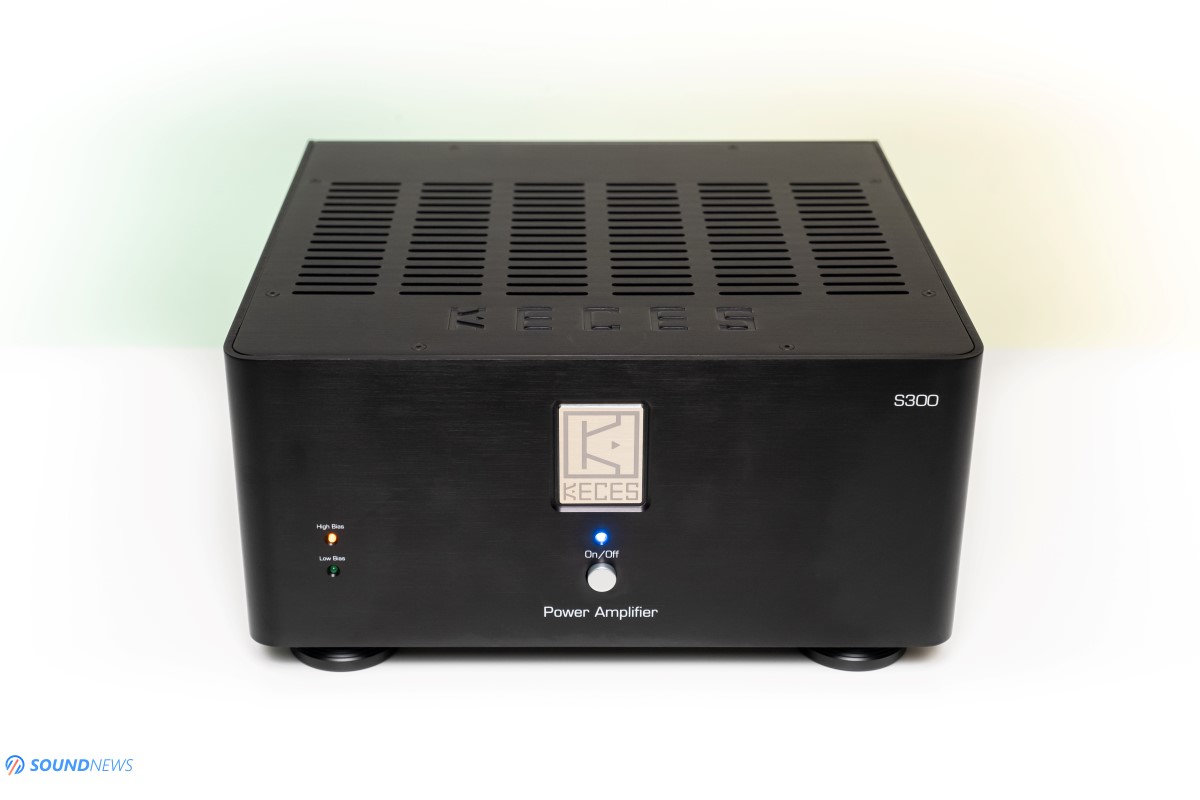
Design & Build Quality
Thor almighty! This thing has some amazingly thick panels around it, that are adding a level of confidence while looking at it. You will not find punched steel cases on any Keces device, I really dislike them in high-end audio. S300 is of course looking like a taller S125 power amplifier, but there are some notable changes. While S125 was built to very high standards, the smallest details weren’t that impressive. For example, the edges of the metal plates weren’t sanded and looked quite raw and unpolished to my eyes. While it also used thick panels, those weren’t aligned absolutely perfectly, there could be a minuscule gap here and there. It wasn’t that distracting from afar, but once I was closer to it, I couldn’t unsee them. Compared to that one, S300 is absolutely flawless down to the smallest details. Everything is perfectly aligned, metal plates are polished and sanded, those are smooth to the touch and electropainted with that gorgeous matte black paint.
I really like its newest heavy-duty feet; these are by far the nicest feet I’ve seen on any amplifier and I have no desire to change them with some nicer ones. In all fairness, the stock ones are already super thick, there is a lot of rubber padding underneath that should absorb a lot of micro-vibrations.
Then whole body of S300 is actually a thick aluminum sheet bended at the corners with just two plates attached on top and under the unit. I like that Keces are using their design language on all their devices, the logo carved on top and its shape screams Keces from afar. I also like the newest silver plate in the middle with the company logo, it adds class and a level of refinement to it. The biggest change to the older device, is that the whole top plate on S300 is perforated with several elongated holes so that hot air would move outside of the case. You can spot those holes on the bottom too so that air would move freely in and out of the unit. Considering that S300 is dissipating double the power, it gets much hotter and of course will need a better ventilation.
The power amp itself is quite big, but far from huge, it could be easily integrated in smaller audio racks or even in simple TV benches like I’m using for the moment. While it is taller than its predecessor, I really like that Keces didn’t make it wider so it could pair perfectly with their S3 DAC/Pre/Headphone amplifier or with their Sphono + Sphono Power that are having exactly the same 30 cm width. In all honesty, I can’t complain about its looks, it is small enough, it’s very well-build, has some huge metal feet with a lot of rubber to absorb micro-vibrations and it looks pretty much the same with the rest of upper-class Keces gear.
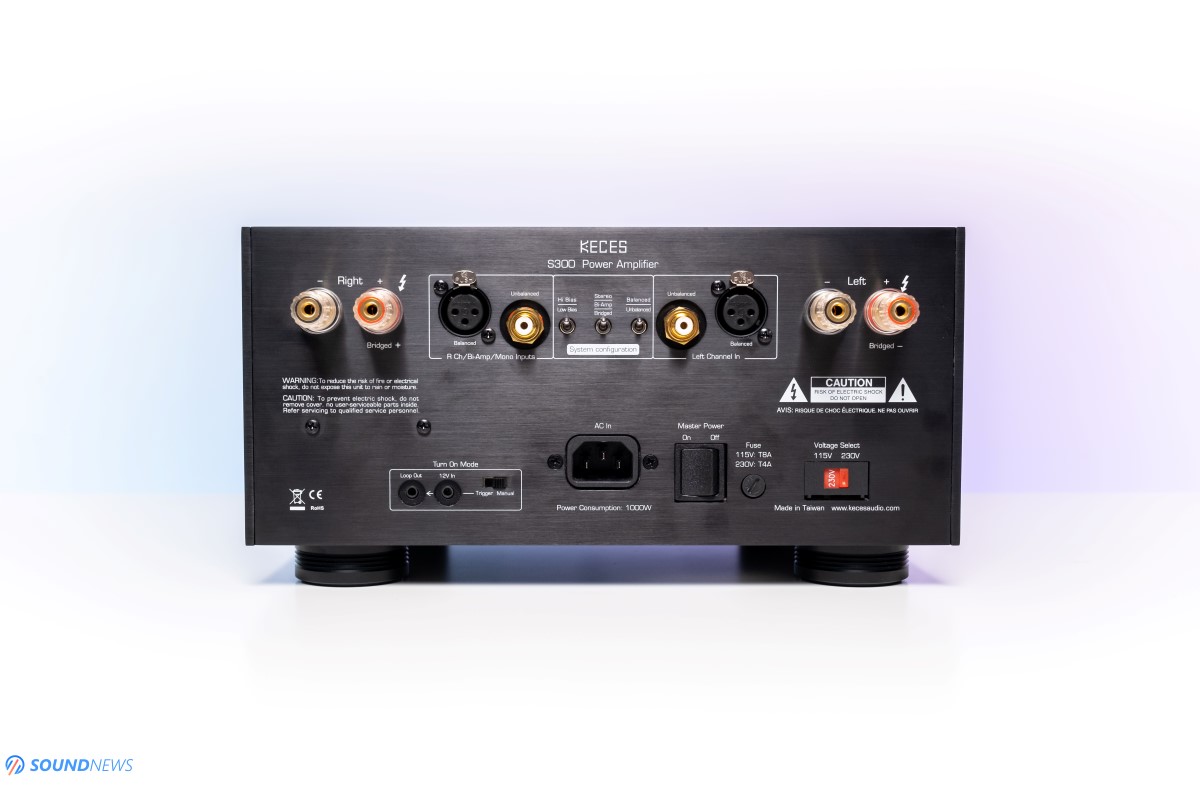
Controls & Connectivity
Being a power amplifier only, you will not find remotes and volume controls with this one, there is only a Power On/Off button and 3 LEDs on its front panel that will show its working status and its Low or High bias mode, everything else is located on its back. There you’ll find your left and right speaker terminals, a pair on unbalanced RCA and balanced XLR inputs and quite a lot of switches in the middle. Now, if you need only a single S300 amplifier, you would touch only the High or Low Bias Mode – In High Bias it will output 5 Watts in Class-A power and in Low-Bias it will work only in class-AB. I personally recommend using High-Bias Mode all the time, it will consume and dissipate more power this way, but it will sound considerably more natural in this mode. The switch in the middle will let you select 3 working modes: Stereo, Bi-Amp or Bridged, but for the last two modes you will need two S300 amplifiers. Finally, there is your balanced (XLR) or unbalanced (RCA) switch. In case you want to power-on all your Hi-Fi equipment at once, Keces added a 12V trigger and a loop out, just in case you’ll want to add a Keces Sphono and Spower later on and power them all with a single 12V trigger remote.
It’s important to mention that KECES included an Overload and an Over Temperature Protection circuit and no matter how hard you’ll push it to its limits, it will shut down by itself to cool down and save your speakers from any further damage. I’m spotting 4 fuses inside it and that makes me extremely happy.
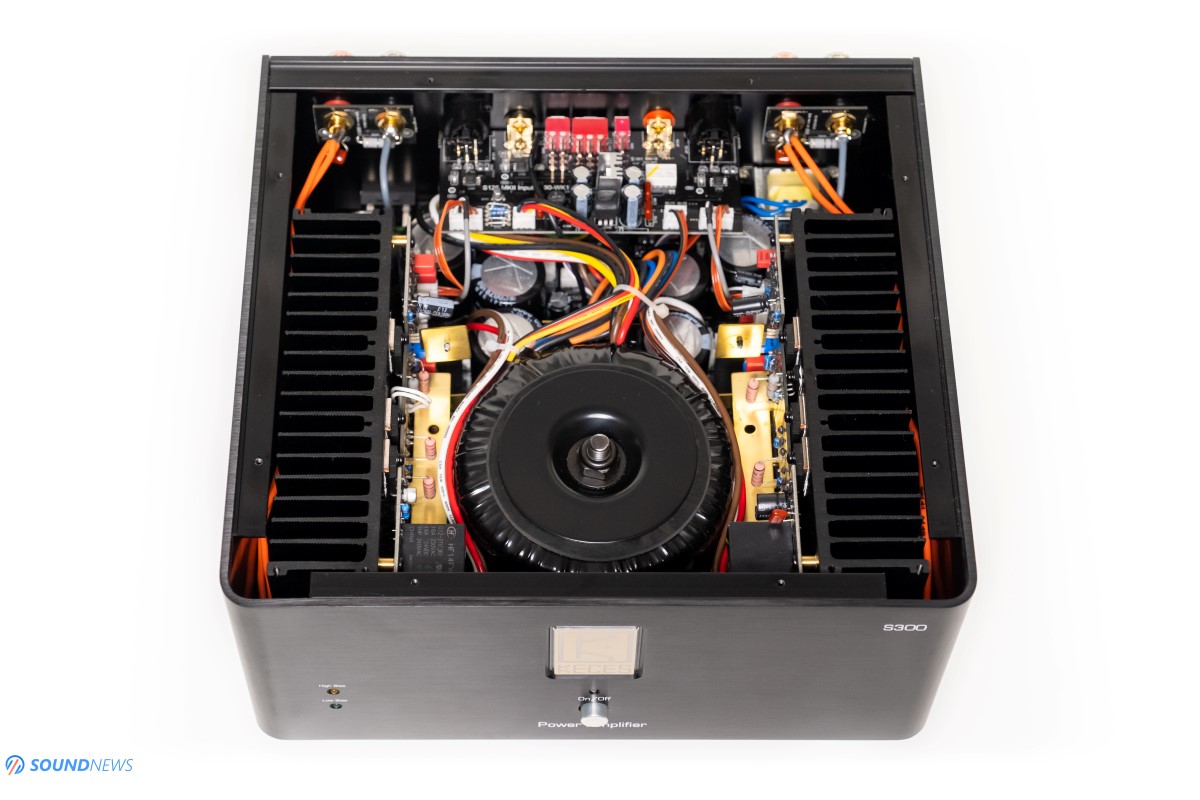
Tech Inside S300
If you are currently using a class-D amplifier and enjoy the hell out of it, then please stop here and go read some of my latest DAC reviews. If you are new to this or if you are curious about the best sounding amplifier topologies, then please carry on. It so happens that I’ve tried most amplifier designs by now and while class-D amplifiers are indeed super-efficient when it comes to power consumption, they don’t require nuclear power plants to work at maximum potential, they will always look supple and lightweight, will dissipate a whole lot less heat in the room. The biggest downside is that they will not deliver the sweetest harmonics, some huge dynamic swings and will not throw a bigger than life image in front of you. In some ways, they aren’t pushing your speakers to their limits, but on the contrary, will be making them calmer and smoother sounding. Class-A amplifiers are completely on the opposite camp, they are much bigger, heavier, much more expensive and are super inefficient power draining machines, yet those are very desirable, especially when it comes to high-end audio. Class-A amps are still very popular among audiophiles, due to their instant power delivery, to their punchy dynamics and to some of the best driver control. Due to newer power regulations worldwide, amplifier makers were forced to develop hybrid Class A/AB amplifiers like the one I’m testing today or completely move to class-D.
Its predecessor, S125 was offering 3 Watts in Class-A and rest of them in Class-AB, so no matter what speakers you’d be using, be them super-efficient or not, the sweetness and those natural harmonics will always carry over and be felt in your music. S300 increased that number to 5 Watts and the rest 125 Watts will be delivered in AB. Its current delivery per channel increased from 30 to 45 Amperes – this fact alone is extremely important if you want to drive inefficient stand-floor speakers to their maximum.
S300 is a fully discrete JFET input stage to MOSFET output stage power amplifier, it is direct-coupled with no capacitors, inductors or op-amps in its signal path. It uses some huge transistors, I counted 14 of them, but there might be some more. Most of them are glued to massive heat sinks to cool down and prolong their lives. Keces used a single but massive 1.2 kVA (1200 W) toroidal balanced transformer and about ~65.000 μF will be filtering and storing power for better dynamic swings. Of course, some DC servo circuits will be dealing with source noise with the help of negative feedback – it’s important if you’re using noisier analog or digital sources.
As for the power output, it will deliver a continuous power of 130 Watts per channel in 8 Ohms, 240 W in 4 Ohms and some whopping 410 W in 8 Ohms if you bridge two units working as a team. Overall, the spec sheet looks amazing and I can’t wait to have a proper listen to this amplifier.
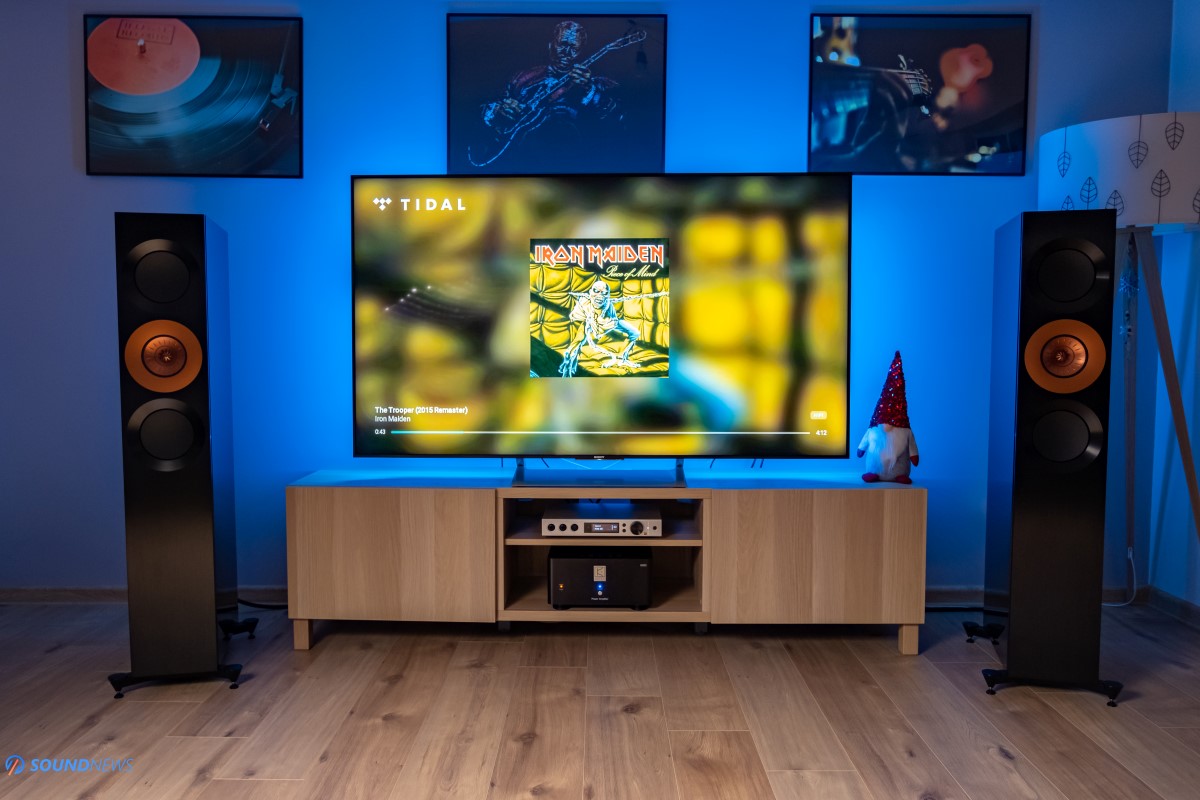
Test Equipment
S300 was used in several stereo setups and also in a headphone-based setup and yes, you’ve read that right! At my place it was used in tandem with a Matrix Audio Element X and then with an Audiobyte HydraVox + HydraZap stack, both were used as DAC + Pre units directly driving that S300. In some later stages of my review, I’ve also added a Benchmark HPA4 preamplifier in the chain, just to check if it will further elevate my listening experience.
Because I wanted to squeeze the last drop of performance out of it, I’ve used three different loudspeakers: my daily driver Buchardt S400, then some nicer Sonus Faber Concerto Domus at a friend’s house and lastly a high-end pair of KEF Reference 3 at my place.
S300 was also used with Hifiman HE-Adapter, directly driving a pair of Hifiman Susvara, more about this pairing in its dedicated chapter. Okay everyone, enough with the talk, let try some tunes.
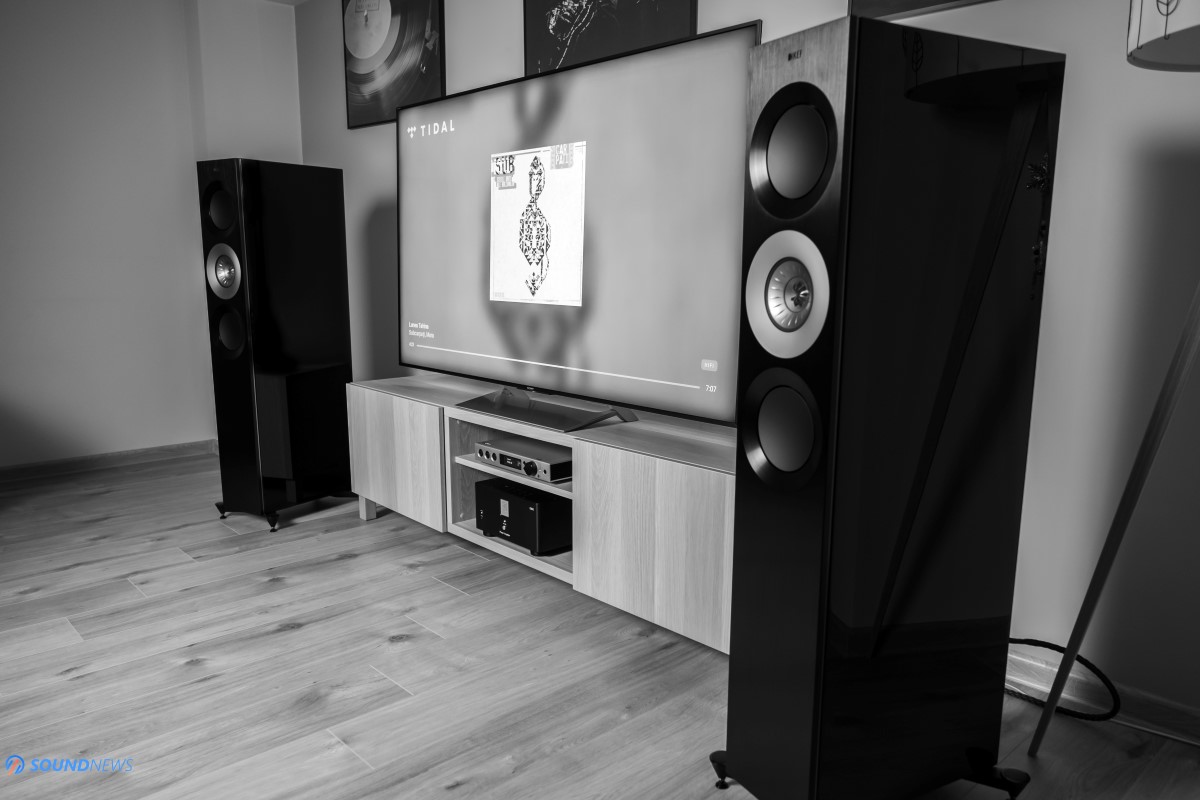
Sound Performance
I. Preliminary Impressions
I was so excited testing the hell out of the bigger brother of my own power amplifier, that immediately after receiving it, I’ve called a friend of mine for a listen, I’ve replaced my amp with S300 and we started a longer listening session. Initially the sound was quite underwhelming and disappointment could be seen on my friend’s face. It sounded closed-in, soft and gentle, dynamics where nowhere to be found, but everything was extremely clean and detailed sounding. It sounded tiny and very strained, we were searching for some impact and body hits, but those were missing in action. We both knew that a long and tiresome burn-in will be needed to wake him up. In the end it would take about one month before it started blooming, offering plenty of technicalities and huge dynamics, surpassing its little brother S125 in all those three distinct speaker setups.
I’ve called my friend again, it was a Saturday morning, we stood there and listened for half a day to a lot of music ranging from classical, jazz, blues, electronica and even some symphonic metal squeezed in that playlist. We started searching for obvious cons and limitation, we tried quite hard, but at the end of the day remained impressed by its performance. I’m not going to list the equipment of my friend, but the next day he started researching about hybrid Class-A/AB amplifiers, needless to say, he will probably upgrade to one very soon.
When I’ve added the Benchmark HPA4 in the chain and used the streamer inside the Element X, driving the bigger KEF Reference 3, I was stunned by how tighter everything sounded and how much more detail entered my room. Bass notes didn’t linger around that much, they were faster, more visceral and impactful sounding compared to my S125. I never knew bass could be so tight and impactful sounding at my place.
I clearly remember playing Nik Bärtsch’s Ronin – Modul 58 (Tidal / Spotify), a track that I know very well, even before it was released to the masses, but that is probably a story for another time. My friend Nik and Sha are recording their albums only with the highest quality equipment and that can be immediately felt while listening to their masterpieces. This track felt border-less in my room, it sounded simply massive, everything happened around me in a very holographic and engaging way. At the 14 minute and 12 second mark, Nik starts slamming the piano creating some huge dynamic rises that made me jump half a meter from my sofa. I knew those notes before, but they never were as visceral and impactful before. KEF Reference 3 plays a huge role in here, but the last word in dynamics is of course being said by the Keces S300 power amplifier. I was deeply moved and impressed.
The more I was listening to it, I was realizing that even if a single S300 would not provide a huge power reserve and probably wouldn’t move some bigger ATC speakers, it always provided a clean, detailed and a very meaty type of power. It was crystal clear sounding all the time, yet there was color in music, a higher contrast, there was warmth in the midrange, huge impactful bass notes and some very defined trebles without being sharp or bright sounding. Sincerely, this is the cleanest sounding power amplifier I’ve tried at my place, it surpassed even that impressive sounding Kinki Studio EX-M7 in here. Its only drawback was its power delivery, but considering it can move a pair of KEF Reference 3 with some 25 dB left on tap, I’m pretty sure it will do just fine with most normal sized speakers out there. Preliminary impressions are very good, but there is still a lot more to say about it, so let’s break it down step by step.
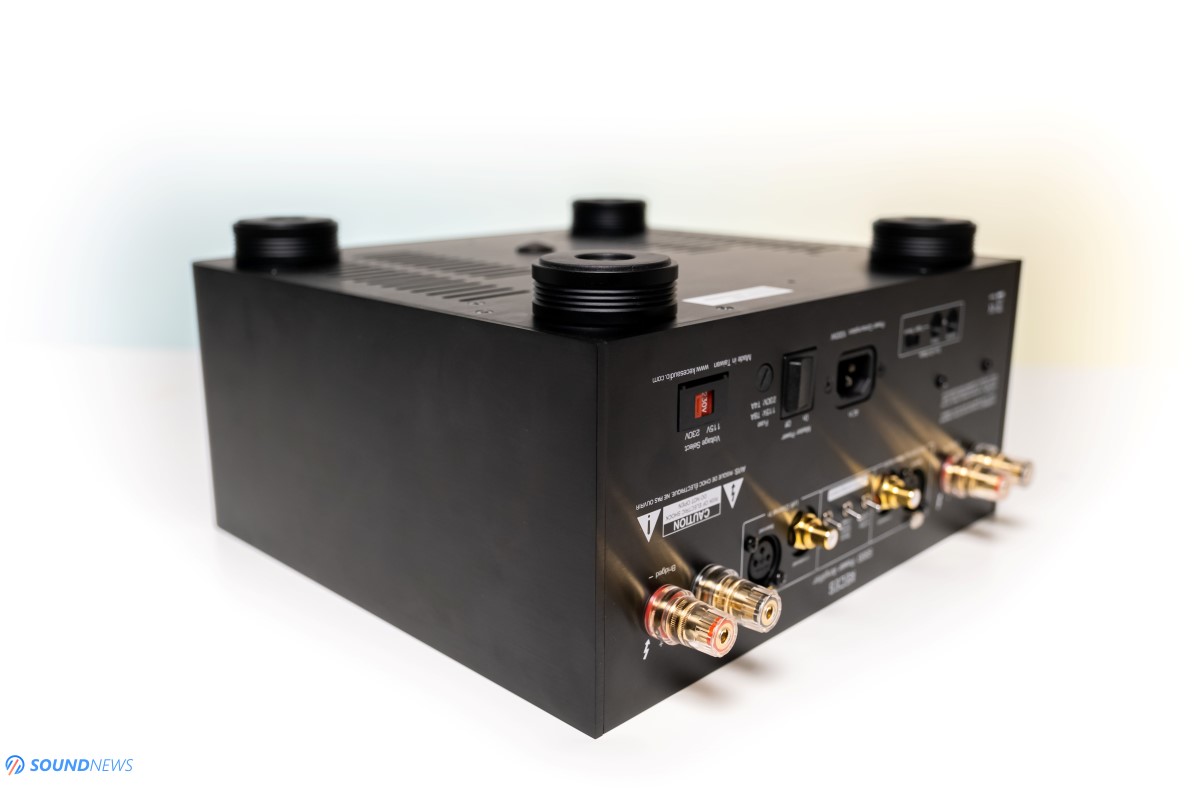
II. Noise Floor
S300 is receiving multiple helping hands in repelling mains noise at my place. First aid comes from the costlier power lines I’ve implemented, second help comes from Matrix Element X, as when I’m switching to its streamer mode, everything that has to do with USB jitter/timing errors will not be an issue anymore. The last line of defense, comes from none other than the S300 itself. Its internal DC Servo circuits will be dealing with any noise, be it from mains or source noise, with the help of negative feedback – that’s really important and after testing 3 power amplifiers in two high-end rigs, S300 came out as the cleanest sounding with absolutely zero noise coming out of my speakers. S300 is also having an AC turn-on inrush surge protection, Overload/Over Temperature Protection, so it already works as a small passive power conditioner if you ask me.
I’ve compared S125, S300 and Kinki Studio EX-M7 and from them all, S300 was the best at fighting noise as it was always dead silent at my place. I’ve approached my speakers; I pushed the volume close to the max and there was still nothing coming out of them. There is nothing I dislike more in my music like a muddy sounding unit, that increases distortion and noise floor, luckily S300 is neither of that and as of right now, it’s the cleanest sounding power amplifier I’ve tested.
This is not coming as a surprise to me, because KECES is well-known to be making some of the best balanced isolated toroidal transformers. The output power comes from the transformers themselves, a higher quality of the transformer – the better it will defend against all types of noise and I’m glad to report that S300 achieved a flawless victory in here.

III. Transient Response
As always, this is my favorite chapter to write about, since it directly impacts my mood level for the rest of the day. I dislike slow and boring sounding amplifiers, my blood is boiling while listening to music, I’m more about the speed and impact, especially while listening to modern music, where engagement factor is everything. I can’t have this burden on my shoulders anymore so I’ll tell you from the start that from all power and integrated amplifiers I’ve tried in a span of 10 years or so, S300 delivers the most current per channel, more exactly 45 Amperes peak-current per channel and that translates in the hardest slamming amplifier I’ve had the pleasure of listening.
While Kinki Studio EX-M7 (18A) and to some degree Keces S125 (30A) were no slouches either in this department, sounding fast and snappy all the time, S300 dialed-up the speed and kick into my chest to eleven! The best driver control I’ve experienced was with S300 as long as the speakers are receiving the right amount of power from it. S300 delivers a continuous power of only 130 W in 8 Ohms, with max power of 240 W in 8 Ohms for short bursts of dynamics. However, these are very potent and high-quality Watts, mostly because of its extremely high current output and of its direct-coupled design.
With loudspeakers such as Buchardt S400, KEF Rerefence 3 and Sonus Faber Concerto Domus (at a friend’s place), I’ve experienced quite possibly the best driver control of those speakers, the nicest impact in the chest and by far the highest mood lifting performance of them all. There were several people that came for a listen and we all agreed that S300 was the snappiest and fastest of them all.
I remember clearly when we started listening to Chocolate Chip Trip by Tool (Tidal / Spotify), and when that drumming solo started its ascent at 2 minute and 20 second mark, it felt real and powerful. I felt the drum kit sitting in middle of my room, it was loud and mean, clear and textured, but extremely precise and sharp. I’m pretty sure my neighbors felt them as well. Such a brute force, so much impact, yet so tight and controlled, especially via the KEF Reference 3 it was an experience I will not forget very soon. Every hit was felt with my whole body, like I was blotting paper absorbing all the raw energy thrown to my body.
The same snappy, engaging and really toe-tapping performance was experienced throughout a wide selection of music. Even zen-funk felt considerably faster paced as if something would always push forward that music. Instead of slowing it down and smoothing out the pot-holes in my music, S300 would increase the pace and will always pump positive emotions.
I can only imagine how two S300 units in-bridged mode would sound in a high-end setup driving some inefficient speakers. KEF Reference 3 with their 87 dB efficiency are not that easy to drive, yet those were driven I believe close to their maximum potential. With some full-sized ATC’s or Dynaudio’s, a single S300 would surely not be enough, I smell wallets screaming for help as two S300 units will inflict some serious wallet damage.
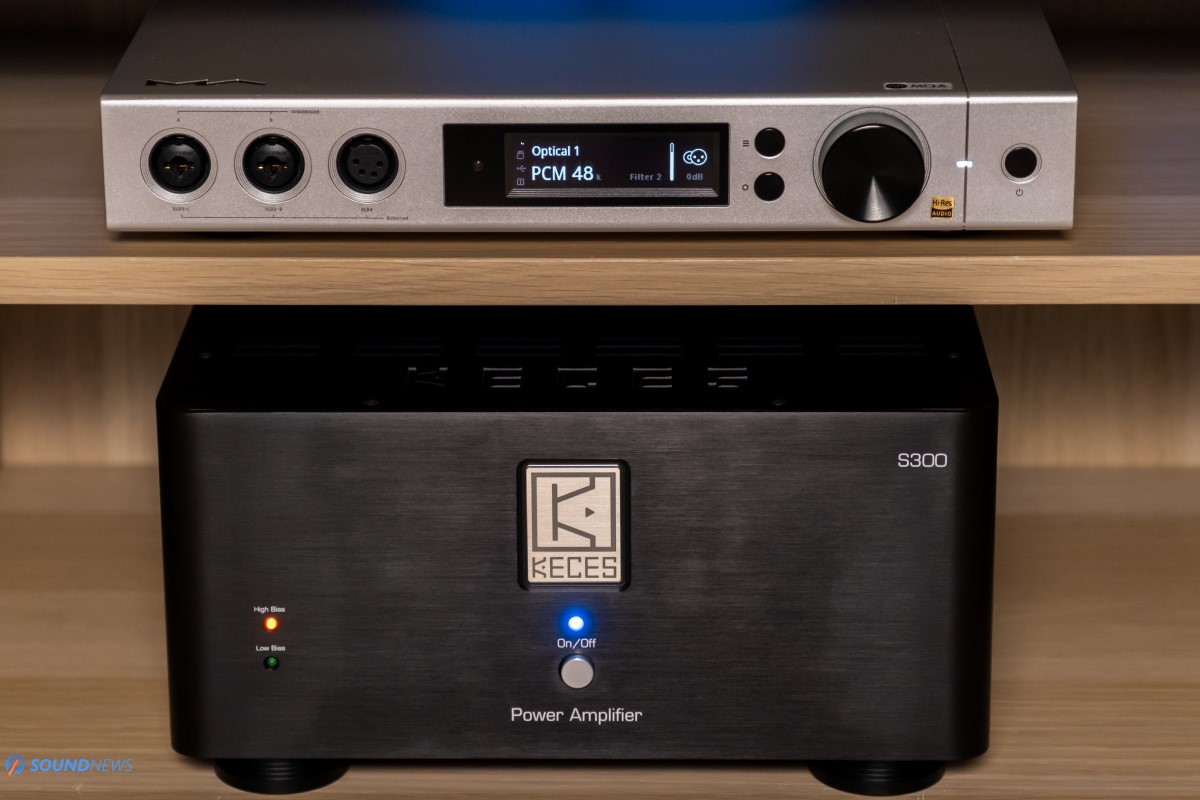
IV. Transparency & Resolution
Lacking op-amps, capacitors and inductors in its signal path is making it transparent sounding and as close to the source material as possible. There wasn’t a moment when I felt that something is missing in my music. On the contrary, S300 was able to show a lot of details and small nuances, without staying in the way of the music. In this regard, S300 approached and even surpassed my former integrated and power amplifiers, it outperformed a Hegel H190, A Cambridge Audio Azur 851A, some lower tiered amplifiers and it is really on the same level with the Kinki Studio EX-M7, which impressed me quite a lot.
S300 is a direct coupled amplifier, so except for its JFETs at the input and MOSFETs at its output, nothing will alter its voicing and sound signature. If you care about transparency, then direct coupled amplifiers should be on your radar. I’ve again compared several amplifiers with the help of few reference recordings just to arrive at a conclusion that S300 together with Kinki EX-M7 sounded the cleanest of them all. I’m interested in trying that Benchmark AHB2 soon, that is known to be among the cleanest amplifiers out there, but until that happens, S300 reigns supreme in here.
The next sentence will sound weird to you, but its transparency was also tested in a very revealing headphone setup, where it was directly driving a pair of Hifiman Susvara headphones. Yes, headphones! Susvara is not your typical headphone, because it needs more raw power than Buchardt S400 and Sonus Faber Concerto Domus to achieve the same sound pressure level. With Susvara, I’m completely bypassing room acoustics so I could hear the absolute truth an amplifier could deliver. Out of them all, S125 sounded less impressive with some tiny noises making a step forward, EX-M7 followed on the second place sounding a bit clearer and S300 was the most impressive with its black as night noise floor, imitating a wire with gain amplifier.
S300 delivered clean sonics in a very transparent way, I didn’t want more details in my music, it provided plenty enough. There should be always a balancing act between emotions and technicalities in any amplifier design and S300 seems to provide a lot of that with its Class-A/AB working principle and thanks to its direct-coupled design.

V. Soundstage & Depth
All three loudspeakers tested are shining in scale and soundstage department, even those Buchardt S400 are well-spread on all axes once you feed them some higher-quality power. S400 are picky loudspeakers and would not sound the same on all amplifiers. In all honesty, only a very few were able to tame its low end and control it with an iron grip. Once you connect them to a snappier amplifier that can push bigger amounts of air in the room, it is like their sheer size is increasing as well, as more air enters the room, decompressing and adding empty spaces between each musical note. An amazing diaphragm control always leads to a higher transparency and that leads to a clearer imaging and to a wider soundstage. All these chapters are interconnected in some ways. Remember that those 5 Watts of power are also playing a key role in pushing more air in the room and filling the gaps with more air density.
If on Buchardt S400 sometimes I wanted a bigger, more direct and coherent sound, with KEF’s I didn’t have complaints anymore as everything sounded tighter, faster, clearer, even bigger and deeper reaching as well.
Listening to soothing music like Buddha Bar – Hypnosis (Tidal / Spotify) where a lot of sounds are happening everywhere in the room, S300 was able to place them accordingly in the scenery, imaging was clear, all those notes felt textured and weighty, but still defined and very outlined. S300 is not only about the contour of the notes, but about their innards that felt meaty and real. With this amp, I was able to close my eyes, relax and pick only the sounds I wanted to hear.
Live version of Child in Time by Deep Purple (Tidal / Spotify) added a fogginess in my room, but that was understandable considering Made in Japan was released in 1972. I was impressed by how much more air there was between the electric guitar on the right to the bass guitar on the left. Notes were bouncing through the walls, filling the room immediately with sounds and positive vibes. Layering was very good, leading edges were clear and there was a great instrument separation and focus. I couldn’t ask for more.
Bottom line is that S300 will be adjusting to your tunes, to your speakers and room acoustics. It will sound big, extended, separating the notes from each other with well-mastered music and vice versa, decreasing the room size, pushing you closer to music, creating an intimate performance with some other tunes. I didn’t feel for a moment that S300 was limiting said speakers in any way, but at the same times all three aren’t exactly the most power-hungry speakers I know.
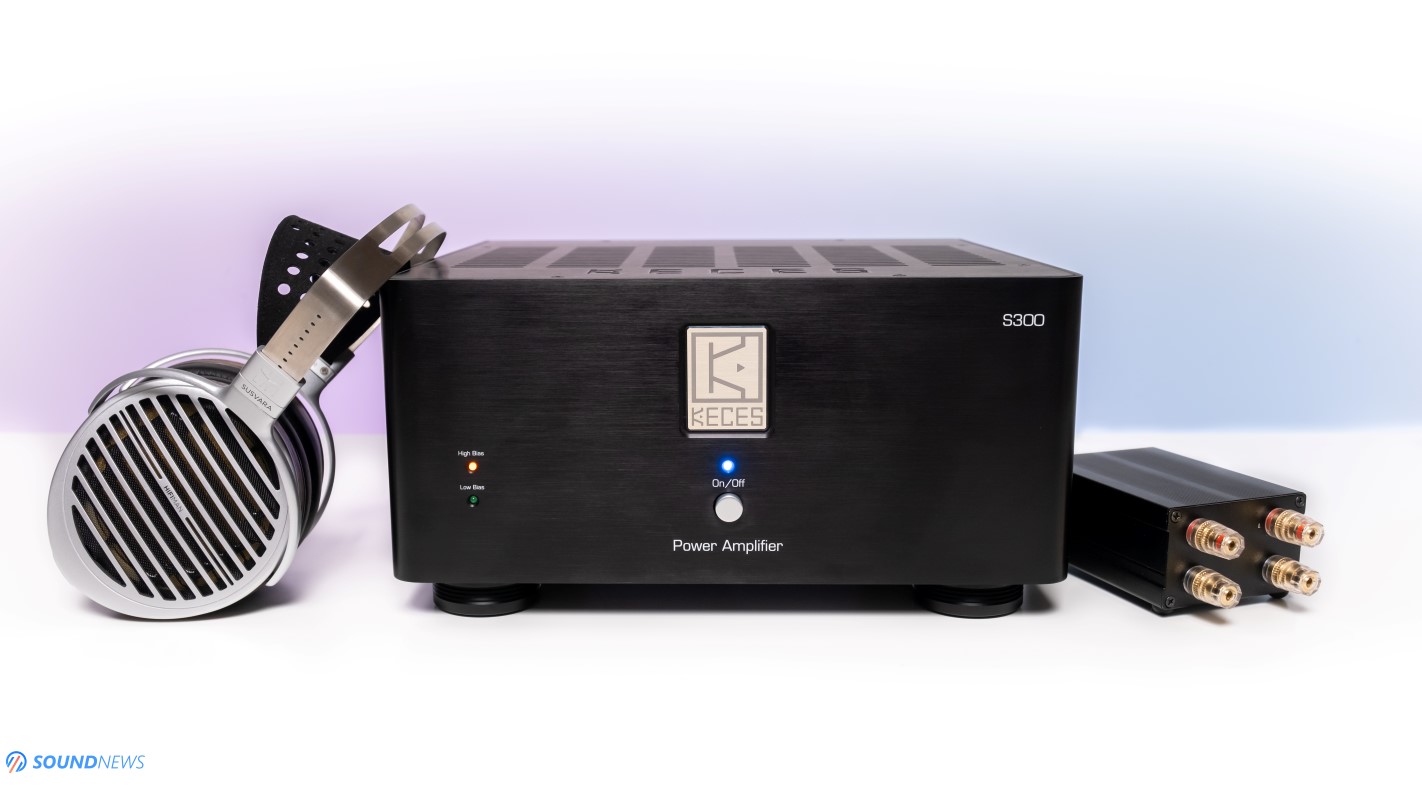
VI. Passing the Susvara test
Hifiman Susvara is such a weird headphone that from five powerful desktop headphone amplifiers at my disposal, only one was able to drive them decent enough. Benchmark HPA4 was shutting itself down when a powerful bass note would appear, even that 16-Watt Flux Lab Acoustics FCN-10 was shutting itself off in some crowded high dynamic range tracks. Sparkos Labs Aries didn’t stand chance with them, being maxed out on SMSL SH-9 was unsatisfactory on some particular music and same can be said about the rest of them.
Hifiman is selling separately a metal thingy called HE-adapter that can be connected to the speaker terminals of your power or integrated amplifier and with it you’ll be able to properly drive the damn Susvara with an evil grin on your face, awakening much higher dynamics in the process and this is exactly what I’ve done (Insert an evil smile here).
I tried them first with S125 power amp and there was a sizable improvement compared to all headphone amplifiers I’ve tried before it. Finally, there was a nicer punch, a better driver control and a deeper and more visceral bass performance. I was shocked to know that Susvara needed about 10 dB more on the HPA4 preamp compared to the Buchardt S400 to achieve the same SPL, that is crazy! Yes, Susvara needed more power than a passive 3-way loudspeaker!
On Kinki Studio EX-M7, believe it or not, it entered its protection mode several times, it was shutting itself down with Susvara and I’m still doing some detective work why that is happening. Maybe its limited 18A peak-current output plays a role in here? That’s a possibility.
By far, the best pairing was with Keces S300. I never heard them as alive and as @ss kicking, the little big amp was doing some sweet love with them. Everything was improved compared to all those headphone amplifiers and to S125 and EX-M7 power amplifiers. Headroom left on tap was huge, dynamics were explosive, I was jumping from my chair when some Infected Mushroom started playing. S300 passed this test with flying colors and I can’t say the same about the other two amps sitting on the test bench. My Hifiman Susvara review is incoming soon and you could probably guess which amplifier will be driving them (Insert a second evil smile in here).
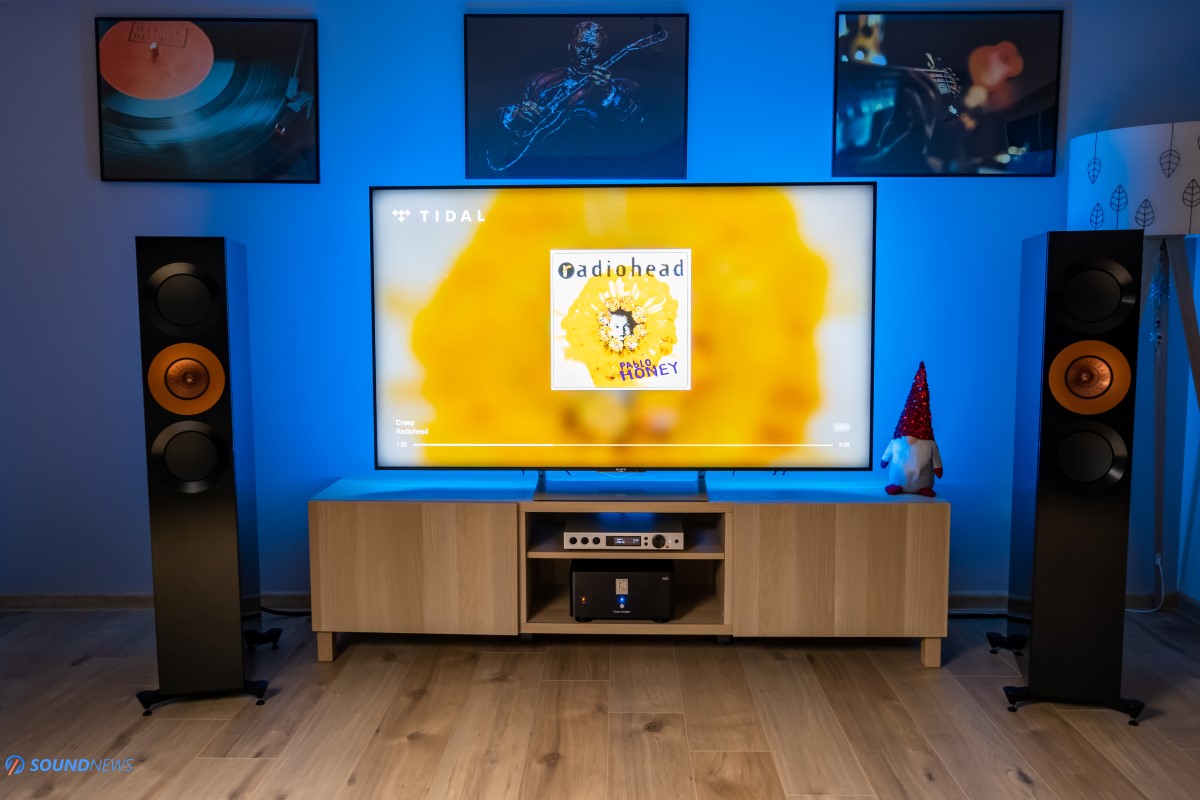
VII. Frequency Response
When I was swapping back and forth a lot of amplifiers, the biggest change was felt in their tonality. While Kinki Studio EX-M7 was a lusher amplifier with a bigger accent on its bass delivery and midrange presence, S300 by comparison felt more honest and more linear sounding top to bottom. It still presented a defined and deep reaching bass performance but it didn’t overdo it. EX-M7 can be considered as a warmer and smoother sounding unit and S300 as faster and tighter sounding, especially in the bass department.
With Reference 3, bass was extremely strong, while on paper the speakers are not going to the lowest octaves, it felt very punchy, authoritative, but controlled and tight. I don’t think I ever experienced more bass in my living room. It was a nimble and a fast-executed type of bass, then it would decay it instantly without lingering for a longer period. S300 provided a linear bass type, yet it was snappy and impactful all the time. Mid-bass felt exactly the same, latest Uni-Q drivers by KEF are extremely impressive when it comes to cleanness and cohesiveness. I never wanted more bass in our living, I actually wanted a little bit less. An acoustic treatment will be coming soon and I hope to solve the slight issue I have with the lowest frequencies.
Midrange is very nice, it’s meaty and full of substance, it carries a heavier tonality. Male and female voices were rendered extremely well. I’m pretty sure those 5Watts of Class-A power aided its midrange performance quite a lot. I wish more amplifiers would have such an imposing and full midrange as S300 is having. I never felt a trace of thinnest or dryness in here, as everything that has to do with midrange was rendered life-like and soul-grabbing most of the time. There was just a small increase in midrange presence that added more body and soul into my music, but it’s only by a smidge warmer and smoother sounding in here.
Treble was changing quite a lot depending on the track. First and foremost, it was clean and extended way up, past upper treble. KEFs are extremely precise in the treble, smallest nuances were perceived quite easy, without stressing myself too much. S300 would not push that treble higher to the bright side, nor would it limit it in any way. While treble was sharp and defined on tracks filled with tambourines, bells and cymbals, it never appeared to me as sibilant or edgy. Imagine a clean treble delivery, without sacrificing detail, texture and naturalness and that is pretty much how S300 sounded in the treble.
Overall, I consider it having a close to perfect frequency response, it is very extended at both ends of the spectrum and never rounded my bass or treble extension. It has a great tonal balance and it never appeared as fake or bright sounding to me.
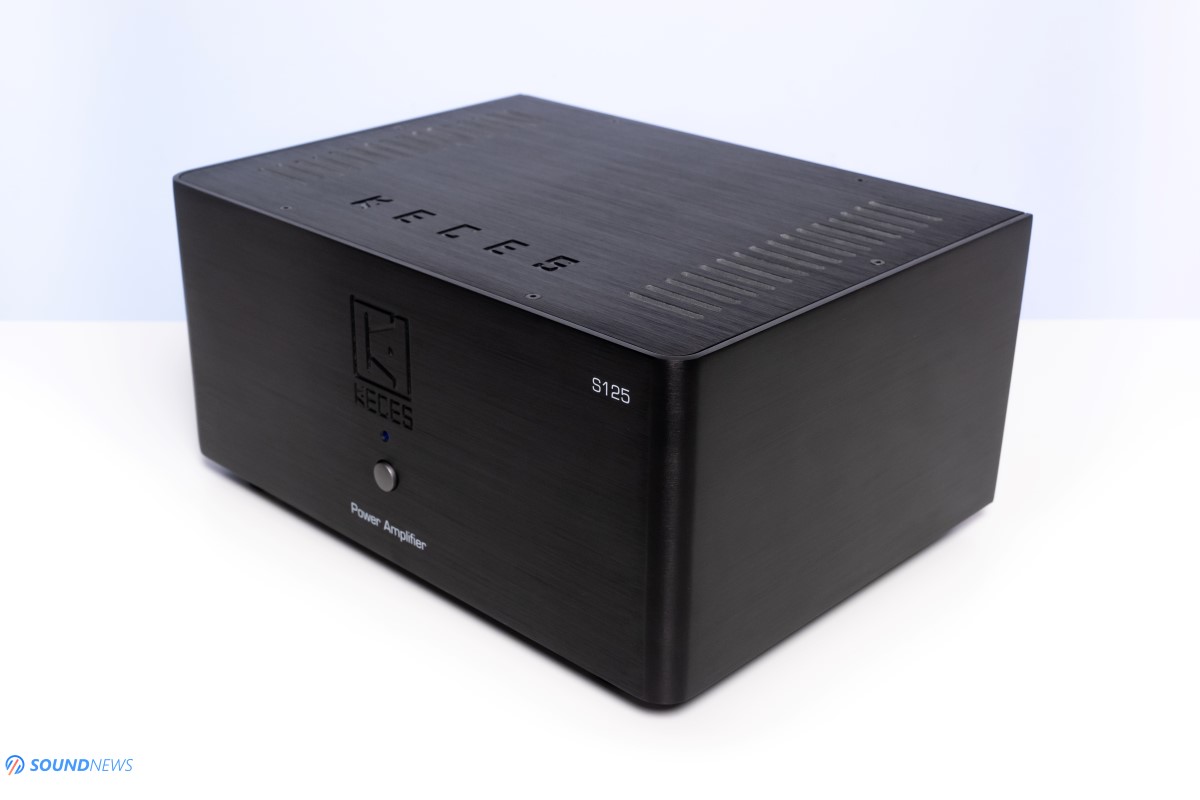
VIII. A Tale Of Two Brothers
KECES S300 ($2799/€2999) VS KECES S125 ($1099/€1399)
If you want to know my opinion about the S125, you should go and check its in-depth review I’ve posted two months ago, I won’t be mentioning all their specs again, build quality and so on, you can check them all for yourself. I will only tell that S300 is consuming twice the power of S125, while on paper delivering 130W instead of 125W on S125, quite a minor difference, right?
With smoother music, where big dynamic swings would never occur, honestly the difference wasn’t that huge. Especially with Buchardt S400, they both performed more or less the same, with the exception that S300 was uncovering an additional layer of information and was pushing a bigger and a wider sound in my room. I have also observed that strings instruments were better controlled on S300, sounding clearer, with less smearing and decaying somewhat more naturally. With S125 sounds would drop faster and with S300 that would not happen. Tonality wise, both are pretty much the same and I wouldn’t be surprised experiencing a very similar performance with lower grade speakers.
Increasing the pace with modern tracks and moving to the KEF Reference 3, now we’re talking! All that I’ve felt on Buchardt’s moved to Reference 3, but there was more! Bass was hitting harder, being more visceral and impactful, driver control felt immaculate. Reference 3 was spitting bass notes like a machine gun on S300, but that didn’t happen so clear on S125. Soundstage was massive on all axes with S300 and shier and more intimate on its smaller brother. Tonality wise both appeared pretty much the same, but S300 had more nerves, it was meaner sounding all the time and it was better controlling the drivers. Smoothness would appear only with the right music, but with S125 smoothness would appear more often. Transparency and detail retrieval were improved to a smaller degree, there was maybe more treble detail but only on some particular tracks.
How big is the difference between these two very much depends on the speakers you are using and on the rest of the acoustic chain. Use a sensitive speaker and the difference would be minor at best and use lower-sensitivity speakers and the difference would be very apparent in favor of S300.
Of course, it didn’t perform 2.5 times better than its smaller brother as its price might suggest, I would say somewhere around 20 to 25% better and as in all things high-end audio, you need to pay a very serious difference for a small improvement in sound quality. If you already own a S125, you can write in the comments section bellow your exact acoustic chain and I will let you know if an upgrade would make sense or not. I am personally in the process of overhauling my loudspeaker setup, so I might end buying the review sample as it performs exactly as I want it to.
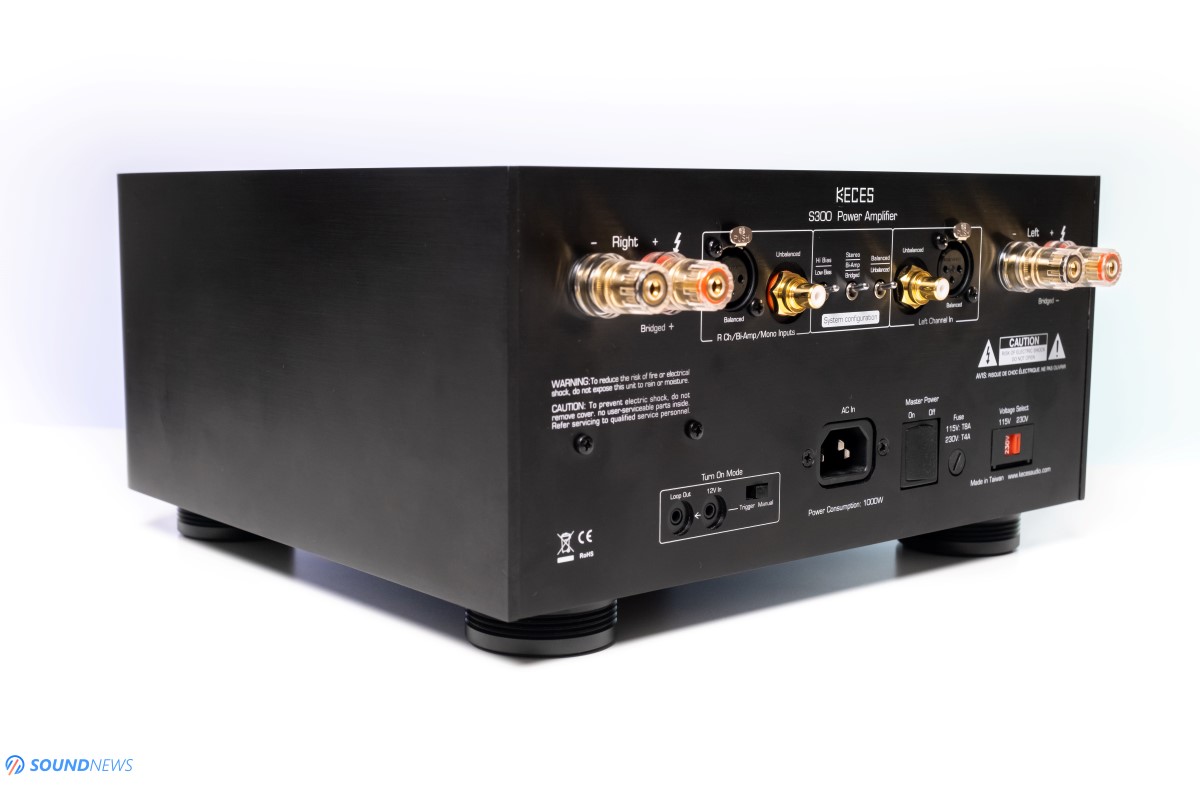
Conclusion
It should be pretty clear by now how much joy KECES S300 brought to my place, I enjoyed the hell out of it for quite some time. It made several trips to few close friends of mine and other people joined forces on week-ends for some extended listening sessions and if you are coming for a listen, don’t forget grabbing a bottle or two.
The component selection is really good in this one, it’s working principle is probably the best compromise between sound quality and power consumption. I am now a believer in Class-A/AB power amplifiers and I have no desire to use efficient but less-engaging Class-D amplifiers at my place. A day might come when a Class-D amp will impress me deeply, but that’s not today my friends.
I’m yet to experience the same control and grip it had in the lowest octaves and that detailed but natural sounding treble performance. It felt like a tasty and well-balanced audiophile cocktail with a perfect dose of alcohol, flavor and after taste.
In my view, KECES S300 is a high-end power amplifier and as such it was priced accordingly. It will cost you €2999 in Europe or $2799 in USA and you can get one (or two) from your local KECES distributor.
Considering its immaculate performance on all fronts, I’m honored to award it our highest Golden Award, it really deserves one. Congratulations to the team and I’m looking forward to their next doings.

PROS:
- Minimalist looks, simple industrial design
- Small footprint, works nicely with TV benches too
- Has a lot of protection circuits that should save your speakers in case of a power spike
- Provides a massive current output, providing a perfect driver control
- Plenty of power, even for stand floor speakers
- Pretty much the best dynamics I’ve experienced on speakers at my place
- Airy, deep and wide sounding with the right music, amazing soundstage size and depth
- Extremely clean sounding, with zero noise even at maximum power
- Very detailed and transparent sounding, will uncover the smallest details in your music
- Authoritative, impactful and explosive sounding with the right music
- Very good pin point localization of all the musical notes in the room, 3D sounding if you will
- Extended frequency response at both ends, it’s linear and straight as a line too
- Some of the best bass and midrange performances I’ve experienced in a power amp
- Great tonal balance, it sounds organic, yet technical and precise
CONS:
- Quite hot after about an hour or so, don’t place anything on top or under it.
- A bit expensive but it’s understandable why
ASSOCIATED EQUIPMENT:
- Sources: Xiaomi Mi 9T Pro, Corsair One i160
- DACs: Audiobyte HydraVox + HydraZap, Matrix Audio Element X, Soncoz SGD1, Aune Audio S8, Burson Conductor 3X Performance
- DAPs: Shanling M6, FiiO M15
- Headphone Amps: Benchmark HPA4, SparkoS Labs Aries, Flux Lab Acoustics FCN-10, LittleDot MKIII SE, SMSL SH-9
- Power Amps: KECES S300, S125, Kinki Studio EX-M7
- Loudspeakers: KEF Reference 3, Buchardt S400
- IEMs: FiiO FA9, FH7, Meze Rai Penta, Rai Solo & lots of other lower tiered ones
- Portable headphones: Sennheiser Momentum 2, Meze 99 Classics
- Wireless headphones: Sony WF-1000XM3, Sennheiser Momentum 3, Master&Dynamic MW65
- Full-sized headphones: Fostex TH-909, Hifiman Susvara, Hifiman Arya, Audeze LCD-4, Erzetich Phobos, Erzetich Mania, Quad ERA-1, Ollo S4X Reference, Kennerton Wodan, Magni & Gjallarhorn
- Interconnects: QED Reference (x3), Aune AL3
- Speaker cables: Kimber PR8, Audioquest Type4
- Power Cables: Isotek EVO3 Premier (x3)
- Balanced Isolation Power Conditioners: PLiXiR Elite BAC400
